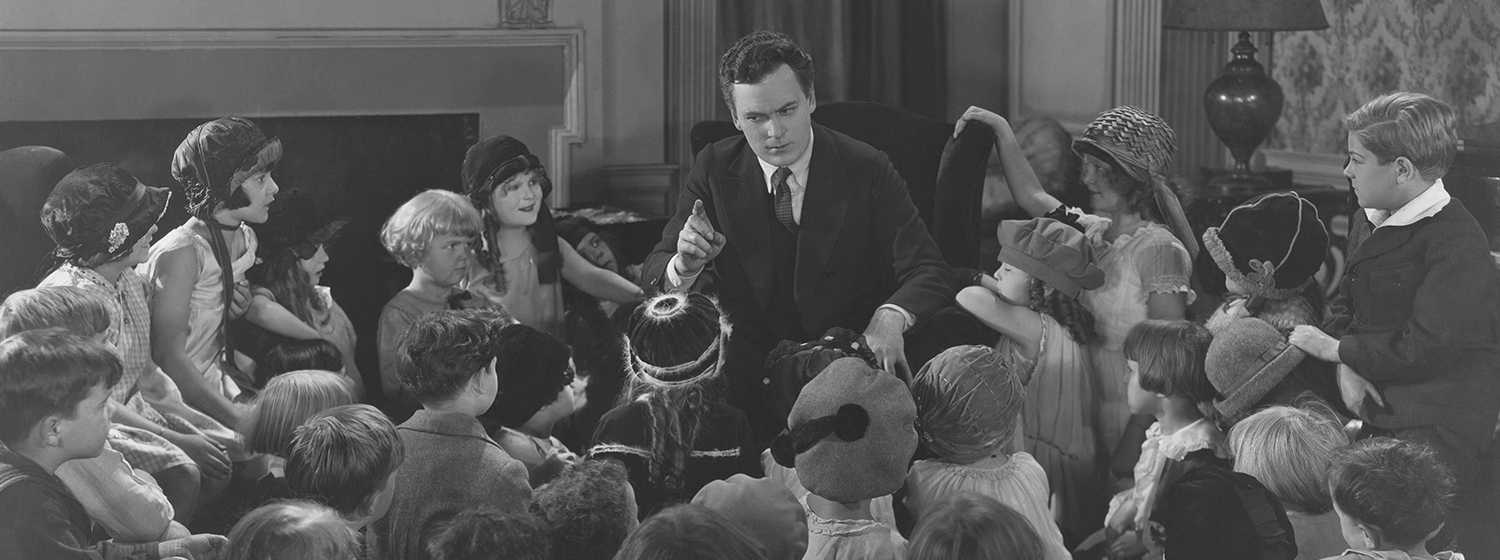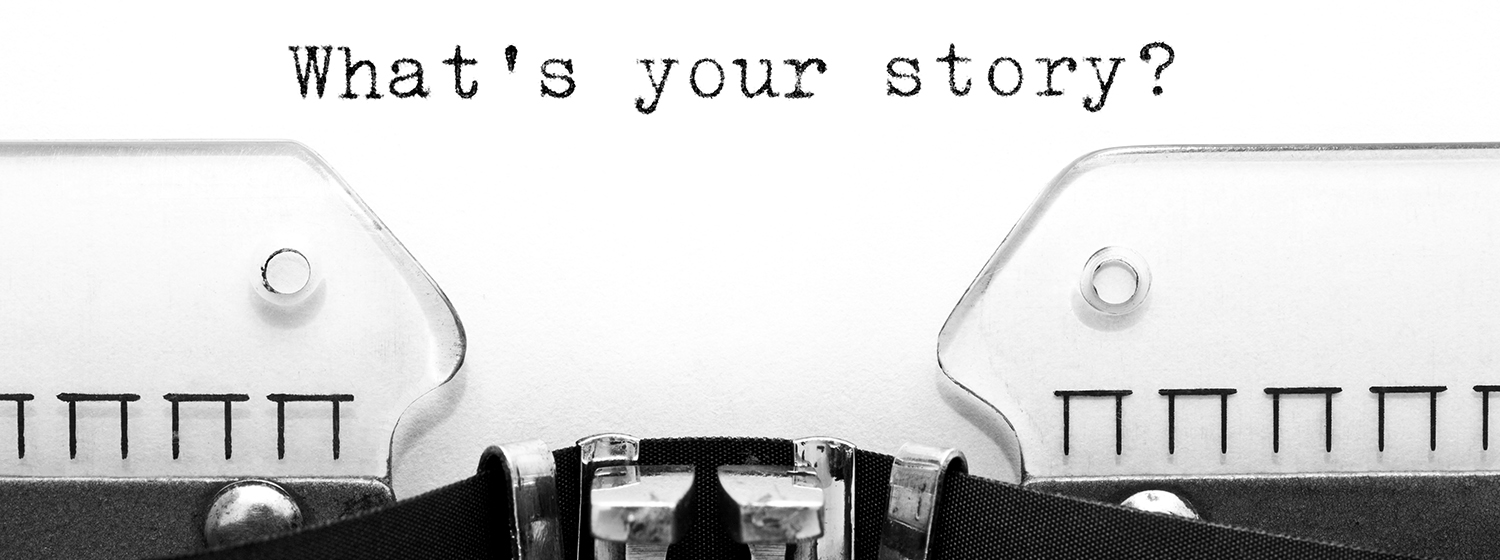So, you’re ready to leave “NEC” mania behind? Ready to stop hinging everything on the same one-note message of Networking, Education, and Certification-and instead, embrace a storytelling approach?
Great! We can help. Let’s review quickly why we’re trying to hammer home the storytelling message, with a story of our own. It should sound familiar.
Once upon a time, associations were central parts of people’s lives, because there was less competition, fewer alternatives for learning and connecting with peers, no web, and no insta-anything. There was one message from above, and one place to show up. But now, we live in a new era where competition and options are plentiful, and there are many places to show up. A time when people are talking to each other, and ideas are spreading horizontally-versus from the top down. Recession or no recession, these old ways of talking to people . . . Come for networking, education, and certification! . . . have simply grown stale and are losing effectiveness. They don’t forge the three things absolutely needed to make people feel an emotional attachment to your event brand: passion, connection, and affection. What best forges those things, deep in the emotional center of the brain where most decisions are made, are stories.
With that, here we are in 2014, ready to tell stories. The communication vehicle that associations use more than any other is email. So that’s where we’re going to start. In fact, the rest of this article is dedicated to creating compelling story-based email campaigns.
Finding the Stories
If you’re going to turn stories into emails, you first need the stories. They most likely wonít be apparent until you start looking. In fact, the stories you think you need to tell when you first start this process may not wind up being the best ones.
Mining stories is a journey of discovery, and you need to approach it with an air of fluidity, where nothing is a foregone conclusion.
This is why third parties are so helpful for story mining and development. They assume nothing and see possibility in everything-and because they don’t know your “star” members (the ones who sign up the second registration opens), they cast a wide net.
When we start working with an organization, the first thing we do is request every single recent survey or feedback form we can get our hands on. For story mining, we are most interested in the qualitative data: the comments attendees make, the anecdotes they offer, and the hints they drop. We start to see little bits and pieces of stories take shape. Little nuggets of passion, affection, and connection. We know what we’re looking for, and it involves a certain kind of enthusiasm and specificity, and another crucial element: experiences that can be used to counter objections.
As an association, you have to be very clear on the reasons people don’t come. The objections. The best stories answer those objections, not with bullet points, but with concrete experiences. By telling the stories of your attendees, you are letting them talk to one another-instead of you talking at them. Youíre creating horizontal, peer-to-peer movement and elevating personal experience.
What does this look like, practically speaking? Well, instead of sending an email that simply lists the sessions, send an email where an attendee shares the story of how a session impacted their life and business. Instead of an email with a general message of: ìCome for the networking!î try sending an email where an attendee recounts how a conversation in the hallway wound up opening a major door for them.
Identifying the attendees to interview is the first make-or-break point. The second is knowing how to pull the story out of them. Again, this is where a third party is so helpful, because they come to the conversation without preconceived ideas. Plus, attendees/members tend to open up more to someone from the outside. They donít take shortcuts to explain things. They start from the beginning, which means there are many more chances to find the real story.
Finding the Voice of the Stories
It would be wonderful if we could tell you that good stories simply wrote themselves. But they don’t. It takes forethought and careful attention to voice. Remember voice? We’ve written about it many times. It’s not an area to compromise on, or just phone in.
The voice of the story begins with identifying your brand archetype (something we discussed in detail here). What are those timeless stories your brand taps into (healer, hero, ambassador, etc.), and what is the language around that story? What is the personality of your conference? Write dry, boring stories and no one is going to read them.
You’re looking to present lively characters and specific experiences.
If the only thing you say in the story is: “John Smith enjoys the networking, education, and certification options of the XYZ Event,” don’t even bother. You need to show what that looks like, rather than simply saying it. What makes this person tick? What challenges did they face? What problems did the event solve? What surprises did they encounter there? Remember, your glue for creating brand attachment: passion, affection, and connection. Those things should come through in the voice of your story.
A few more quick tips:
- We usually advocate writing these kinds of attendee stories in third person, with plentiful quotes. But you can incorporate first person (testimonial style) as well. Remember, you still have to craft these first-person pieces: one-line testimonials (“The conference was great!”) are useless.
- Keep your stories in the present tense (use past tense only to recall a past event), because present tense keeps the story present.
- Use active voice. Passive voice drains energy out of a story, and makes it sound academic rather than conversational.
Presenting the Stories for Email
So, you’ve found your stories to share and youíve written them. Now itís time to think about the visual element! These are NOT simply text emails. You should design a fully-branded HTML-based template.
There are two main ways to approach designing these story-based emails:
- Lay out the entire story (usually between 300 – 500 words) in the body of the template.
- Have a teaser paragraph in the template that links through to the entire story on a landing page on your website.
We’ve done it both ways, and there are pros and cons to each. On one hand, why interrupt someone’s reading experience by taking them away from the email: why make them go somewhere else? One moment of hesitation or disruption, and you might lose them. On the other hand, directing them to your website puts them right at the point of registration. They are one click closer.
You don’t have to do it the same way each time: you can test out each way, and see if one generates a stronger response. However, if you do option #1, you definitely need an email template that is both responsive and adaptive. With so many people reading emails on their smart phones, you need an email template that reads correctly-in essence, re-configuring itself for the smaller screen, without losing anything (and still being readable, i.e., it’s more than just a miniature version of the email). Of course, for option #2, it’s important to have a responsive and adaptive website, because readers will also click through on their mobile phone.
The lesson? You can’t escape being responsive and adaptive, no matter how you go about it. Itís a design investment well worth it!
As for the design of the email itself, a few tips we have:
- Ask your attendee for a nice headshot. Casual shots-even ones taken at the eventóare best because they feel conversational and showcase personality more. Stuffy, boardroom shots often feel too formal.
- Create a bold heading for the title of the story.
- Break up the text with pull-quotes, blocks of color, and additional pictures. And of course, always include a clear call-to-action.
- We also recommend designing a downloadable PDF for your website. This is a chance to expand beyond the limits of a template. Make this a piece people truly want to share.
So, before you send your next email promoting your event, ask yourself: is there anything in this email that will create brand attachment? Is there anything in this email that makes an emotional connection? Is this email a story about what happens at this event, or a directive to register, based on logic and facts?
We know storytelling works. And we know email works. Blend them together, and make your marketing start working better for you.
Next up: how to integrate storytelling into the rest of your event marketing, including direct mail, website, video, association magazine, and social media.
Share this post in LinkedIn:
NOT ANOTHER SNOOZELETTER.
SIGN UP. BE INSPIRED.










